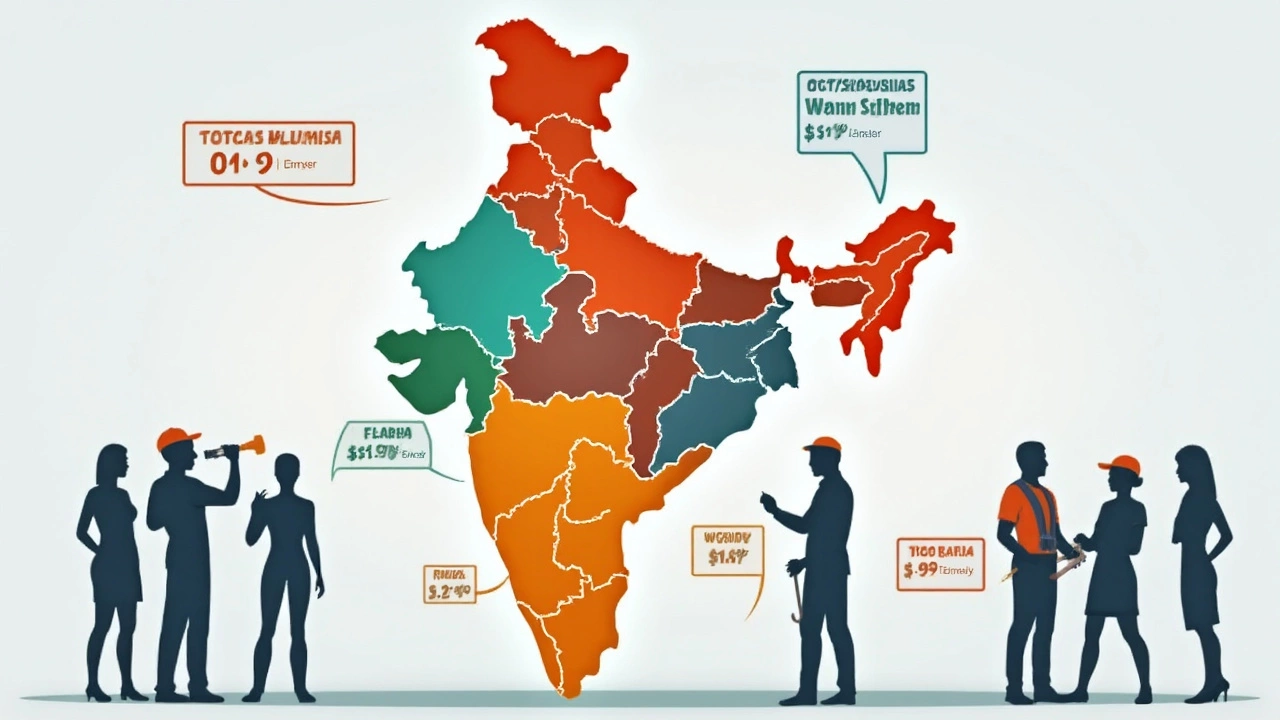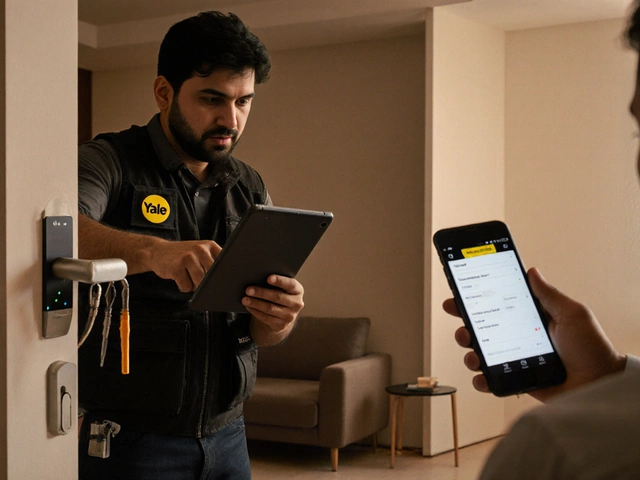Plumbing sounds like a solid trade—steady work, not sitting at a desk, room to move up. But what if you’re just starting out and you want to know how little you might actually earn? The answer isn’t as scary as you think, but it does matter where you’re working and how you get trained.
Across the U.S., the absolute lowest wage a first-year plumber can see is the federal minimum wage, which is still stuck at $7.25 an hour in a lot of states. But here’s the thing: plumbers almost never start that low unless they’re working under the table or in a state that doesn’t license trade jobs. Most places set a higher minimum—even for apprentices. In cities like Houston or Phoenix, for example, $15 an hour is common for someone just starting out. Rural areas and small towns? It might really be closer to $10 or $12 an hour for apprentice plumbers scraping the bottom rung.
- How Low Can Plumber Pay Go?
- Why Location Changes Everything
- Apprenticeships: Paid or Just Peanuts?
- Earning More as a Beginner
- Making Smart Moves in Training
How Low Can Plumber Pay Go?
Everyone wants to know the floor before jumping in, right? When it comes to plumbing, the lowest legal pay is still tied to the federal minimum wage. That's just $7.25 an hour as of late 2024, and it hasn't moved in over a decade. But hardly any entry-level plumbers or apprentices actually see that rate in real life, because most states and cities set their own, higher minimums for trades. Plus, decent plumbing shops want to keep people around, not lose them to jobs at big box stores that might pay more.
Here’s the hard reality: if you start out in a state like Georgia or Wyoming, where the state minimum wage matches the federal minimum, you could earn as little as $15,080 a year before taxes if you work full-time at a rock-bottom employer. This isn’t common, but it happens—especially in the least regulated parts of the country or with companies that sidestep licensing.
| State | Lowest Typical Hourly Wage | Annual Salary (Full-Time) |
|---|---|---|
| Texas | $11.80 | $24,544 |
| Georgia | $7.25 | $15,080 |
| California | $16.00 | $33,280 |
| Montana | $9.95 | $20,696 |
| New York | $15.00 | $31,200 |
The lowest plumber salary happens when you combine a bare-bones employer, a state minimum wage, and little to no experience or credentials. Most first-year apprentices are somewhere between $10 and $18 per hour, depending on where they live. Sometimes, if you’re working for a small, family-run shop and learning everything on the job, you’ll start at minimum wage but see raises as you learn faster.
One thing to watch for: some shady places might offer “training” pay that’s even lower than minimum wage by calling it an internship. That’s illegal for real, licensed apprenticeships. Never accept less than the legal minimum in your state—even if they promise great experience.
Why Location Changes Everything
Where you live pretty much decides what you’ll earn as a brand-new plumber. The pay gap from state to state is wild. Take Mississippi and Hawaii—Mississippi pays the lowest plumber salaries in the nation, while Hawaii hands out nearly double the pay for the same job.
It’s not just state lines, either. Bigger cities, especially on the coasts, bump up starting pay to match the higher cost of living. San Francisco, New York, and Seattle offer some of the best wages, even for beginners. Meanwhile, small towns in the Midwest or South usually offer less, sometimes barely more than minimum wage. That means if you want to earn more right away, location is a huge factor.
Here’s a quick look at average apprentice plumber wages across the U.S. as of 2024:
| State | Typical Starting Hourly Wage |
|---|---|
| Mississippi | $10.50 |
| Texas | $14.00 |
| Florida | $13.20 |
| Illinois | $15.50 |
| California | $20.00 |
| Hawaii | $22.60 |
Of course, numbers change with union jobs, experience, and special certifications. But even the lowest plumber salary will jump if you go where the pay is better. If you’re willing to move—or even just commute to a nearby city—you might double what you’d take home otherwise.
Tip: Check local job boards and trade unions. Try reaching out to plumbers in your area or ask about pay in Facebook trade groups. Sometimes, just knowing what nearby counties or cities are paying can help you negotiate a better starting rate at home.

Apprenticeships: Paid or Just Peanuts?
This is the part a lot of folks misunderstand about learning a trade like plumbing. You actually get paid to learn. But is it much? Well, it really depends on where you sign up.
Most states have guidelines for apprentice pay, but there’s no single rulebook. Your hourly rate is often a percentage of what a fully licensed plumber makes—in many spots, you’ll see apprentice pay start at about 40% to 50% of the full wage. Let’s say a licensed plumber earns $55,000 a year in your city. An apprentice might get something like $27,500 to start. Take a look at common numbers across the U.S.:
| Location | Starting Apprentice Wage (Hourly) | Licensed Plumber Average (Annual) |
|---|---|---|
| California | $18-$22 | $67,000 |
| Florida | $13-$15 | $46,000 |
| Texas | $15-$18 | $53,000 |
| Ohio | $13-$16 | $50,500 |
| New York | $16-$20 | $62,700 |
Here’s the catch: union apprenticeships tend to pay more than non-union jobs. Not just a little, either—as much as 20% higher in some areas. It’s also common for lowest plumber salary to bump up every year you’re in the program. By your third or fourth year, you could be earning close to 80% of what a licensed pro makes, all while skipping student debt.
If you’re scoping out opportunities, ask questions like:
- How many hours will I work a week as an apprentice?
- Does the company or union cover tools or training costs?
- When do pay raises kick in?
- What does a typical salary jump look like each year?
Don’t sell yourself short because you’re new. Even if you’re just starting, a paid apprenticeship gives you real-world skills and a foot in the door. And for plenty of guys and gals I know, that paycheck—no matter how basic—felt a whole lot better than four years of college bills.
Earning More as a Beginner
Just because you’re new doesn’t mean you have to settle for pocket change. Plenty of plumbers start at a decent wage—even in their early apprentice days—by making a few smart moves. Let’s get into what actually works if you want to bump up your paycheck early on.
First, look for union apprentice programs. These often pay more right out of the gate, with hourly rates starting around $18 to $24 in many cities, compared to non-union gigs that sometimes hover closer to $13 or $15. Those union jobs usually include health insurance and training paid for by the company. The difference adds up quick, especially when you’re not scrambling for side work just to get by.
Location is huge. If you can swing it, target areas where plumbing is in high demand—think big cities or regions with a lot of construction. According to the U.S. Bureau of Labor Statistics, the top-paying states for entry-level plumbers in 2024 included Alaska, Illinois, and Massachusetts. In certain zip codes, beginners were making $20 or even $22 per hour, which is a huge jump from the minimum.
Don’t wait to pick up extra certifications or specialties, like backflow prevention or gas line installation. These can make your resume stand out and your hourly rate go up—sometimes by $2 to $5 more per hour, even in those early years.
- Ask for overtime shifts, especially when business picks up in the summer or winter. That time-and-a-half really adds up fast.
- Check out company benefits—some plumbing companies offer tool allowances, tuition support, or paid travel for jobs, which puts more money in your pocket.
- Track your progress and don’t be shy about asking for raises when you gain new skills or pass certification tests.
The bottom line? If you’re in this gig for more than the lowest plumber salary, you’ve got options. Be active, keep adding skills, and don’t just take the first offer that comes your way. A little hustle in those first years can set you up for steady growth all down the road.

Making Smart Moves in Training
The training path you pick will directly affect your pay — not just when you start, but for years down the road. There’s no one-size-fits-all answer, but being smart from the get-go puts you way ahead of the crowd. If you want to avoid getting stuck at the lowest plumber salary while you’re learning, you’ve got options.
Trade schools pop up everywhere, and they’ll promise fast certificates, but don’t trust shiny brochures alone. The real money is in licensed apprenticeships, which almost always pay you while you learn. According to the U.S. Department of Labor, apprenticeships last 4-5 years, but most folks start out earning about 50% of a journeyman plumber’s wage. Not bad compared to unpaid internships in some fields.
A report from the Department of Labor puts it simply: “Workers who complete apprenticeship programs earn $300,000 more over their careers compared to peers who don’t.”
Here’s a quick look at typical training routes and their impact on starting pay:
| Training Path | Average Starting Pay | Duration | License Needed? |
|---|---|---|---|
| Registered Apprenticeship | $15-$19/hr | 4-5 years | Yes |
| Trade School Program | $10-$14/hr | 6-12 months classroom, then on-the-job | Eventually |
| On-the-Job Training (Unofficial) | $8-$12/hr | Varies | No, but limited future pay |
To avoid regret and wasted time (and money), keep these tips in mind:
- Double-check your state’s licensing rules before signing up for anything.
- Ask local plumbing companies which training or schools they respect most.
- If you can, find an apprenticeship that also counts as formal school credit in your state. Some states, like California and Illinois, offer this.
- The best-paid plumbers usually started out as union apprenticeships—they get training plus benefits.
- If you’re switching careers later in life, some programs fast-track older students or veterans. Ask around.
The smarter you are about your training, the faster you move up the pay scale and leave minimum wage behind for good. This isn’t just about picking classes; it’s about setting yourself up for a real, solid career.




